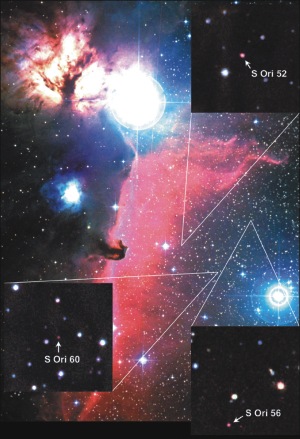Based on our own solar system, a massive body is defined as a planet if it has no nuclear reaction in its interior and orbits a star, says Maria Rosa Zapatero Osorio, who led the team at the Astrophysics Institute of the Canary Islands. But that definition leaves the new-found free-floaters, which have planet-like interiors, in semantic limbo. They hover in the star cluster without orbiting anything.
While some astronomers would like to initiate a change in policy to allow planets the freedom to drift when young, "most astronomers still insist that planets have to be in orbit about stars," says Jibor Basri of the University of California at Berkeley.
At five to 15 times the mass of Jupiter, these new kind of isolated giant planets, as the Canary Island team calls them, breach the size of brown dwarfs. A brown dwarf burns deuterium in its core and not hydrogen, as other stars do. It must be at least 13 times the mass of Jupiter before it can burn deuterium, but not reach 75 times Jupiter's mass, the point at which hydrogen fusion begins.
At three orders of magnitude younger than our sun, these strange objects are challenging the theory of how planetary bodies form. One theory might have the objects forming after the breakup of a large molecular cloud as the smaller fragments collapse under their own gravity, similar to the way brown dwarfs form, Zapatero Osorio says.

Location of the Orionis star cluster (region around the brightest star in the bottom right side of the figure) and finding charts (45" by 45") for three spectroscopically confirmed, very young cluster membranes with masses between 5 to 15 times the mass of Jupiter. Photo image courtesy of Science.
